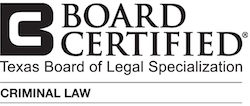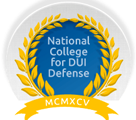Texas DWI Breath Attorney
Texas uses the Intoxilyzer 5000 machine to measure the BAC of an individual suspected of Driving While Intoxicated (DWI). If you were recently charged with a DWI after failing a breath test, it is important for you to speak with an experienced DWI Defense Attorney immediately following your arrest. The Intoxilyzer 5000 uses a variety of assumptions and variables when it delivers a given BAC result for any given individual. In a vast majority of cases, your breath test results may be inaccurate due to faulty testing devices or machine error. In relatively low BAC breath test cases, the individual could have actually had a BAC result below the legal standard of .08 given how the breath test machine assumes a particularly high margin of error. For a wonderful list of the Top 20 Myths of DWI Chemical Tests, written by Leonard Stamm, please click HERE.
Intoxilyzer 5000 Flaws
The Intoxilyzer 5000 is based on the theory of infrared spectrometry. The breath test machine, in theory, ideal is supposed to measure a certain amount of accuracy on a continuous basis. The results, however, are far from flawless. Between each breath test, the Intoxilyzer 5000 is programmed to analyze the concentration of alcohol in a known "reference solution" (or a known quantity) containing distilled water and alcohol. If it predicts this concentration within a certain range, it is "assumed" to be operating properly.The Intoxilyzer 5000 makes many assumptions when it determines the BAC level of an individual. There are many problems with this method of analysis, because it is impossible to ascertain with any degree of certainty if any given result is accurate.
Partition Ratio
One example of an assumption the Intoxilyzer 5000 utilizes is with "partition ratio" employed when it makes its final BAC analysis. The breath testing premise utilized in the machine assumes that there is 1 molecule of alcohol in a sample of a person’s breath for every 2100 molecules of alcohol in a person’s blood. This 2100:1 ratio is an average estimated for each person. In reality, however, this "partition ratio" varies with any given individual. However, the 2100:1 ratio does not accurately reflect what an individual might be, as studies have shown that it can vary anywhere from 900:1 and as high as 3400:1. Therefore, if a person has a "partition ratio" even half of the estimated average (1050:1), then that individual’s BAC reading would be twice as high as the same individual that has 2100:1 ratio. Overestimating the partition ratio will obviously result in a dramatic overstatement of an individual's exact BAC level.
Slope Detector
The slope detector, generally speaking, is an electronic circuit that purports to detect the presence of mouth alcohol as the breath is being obtained by the Intoxilyzer machine. It does this, in theory, by detecting any pronounced negative slopes in the alcohol intake curves, since alcohol content from the mouth or throat will decline more rapidly than alcohol from the lungs. In theory, the presence of mouth alcohol will cause the test to abort. However, these "slope detectors" have proven to be consistently and wholeheartedly unreliable. The slope detector of Intoxilyzer 5000 machine can be fooled by utilizing a slow, steady blow into the collection tube, thereby leading to an inaccurate result. The Breath Test Operator and/or the Technical Supervisor utilized at trial, usually will deliver testimony indicating that the slope detector is utilized as a safeguard, and in the event it does not work as specified with one sample obtained, that is precisely the reason why Texas Law dictates that two breath specimens must be obtained. However, numerous studies and experts have indicated the many flaws inherent with the Slope Detector, including with the article that can be located HERE, which is written by Dr. Michael Hlastala.
Machine Error
Temperature Variation
Hematocrit
Breathing Patterns
In Texas the police are trained to tell subject to blow when told and to keep blowing while there is a tone made by the machine. Frequently the police will encourage a person by saying "blow, blow, blow." There is a true statement that the harder you blow the higher you go. This is due in large part to a person holding their breath prior to blowing and then producing more volume and warmer breath. Studies have shown that "the subject’s manner and mode of breathing just prior to providing breath for analysis can significantly alter the concentration of alcohol in the resulting exhalation." Physiological Aspect of Breath-Alcohol Measurement, Alcohol, Drugs & Driving, Vol.6 No. 2, A.W. Jones. A further background Dr. Alan Wayne Jones (AJ Jones) can be found by clicking HERE. A list of his publications can be found HERE. The same study found that hyper ventilation lowers the breath alcohol concentration by as much as 20% compared with a single moderate inhalation and forced exhalation used as control tests. It also found that holding breath for a short time (20 seconds) before exhaling raises a test.
Radio Frequency Interference
Radio frequency interference (RFI) is electromagnetic interference that affects radio frequency bands from 100kHz to 5 GHz. The RFI antennae in the Intoxilyzer 5000EN is contained in the heated breath tube and was based on radio frequencies used in the 1970’s and 1980’s. The band widths that are currently being used are much different than those when the Intoxilyzer 5000EN was built. Simply put this RFI detector is not reliable. The older band widths are hardly used anymore and the detector is essentially blind to a substantial portion of the band widths used by police radios, cell phones, dispatchers radios, and radar units. Another source of problems is that the RFI detectors are rarely calibrated in the real world by using multiple devises, instead the lab personnel will send a RFI signal that the Intoxilyzer 5000EN is programmed to receive.
Operator Error
Contamination
The Intoxilyzer 5000EN is measures 82.2 cc of breath and produces a result that is in grams per 210 liters. This by it’s very nature means that it must multiple the number by over 1000 to arrive at the grams per 210 result. So this means that if there were even just a very minuscule contamination in the chamber it would be multiplied by over a 1000 to produce a noticeable error. The extrapolation errors present themselves when there is contamination of a breath sample. This can frequently happen due to issues like GERD, dentures, chewing tobacco, or any foreign matter which comes into contact with the mouth.
Medical Conditions/Other Substances
In addition to all of the accuracy concerns inherent in the calculation the machine assumes, there have been numerous other problems associated with the Intoxilyzer 5000. In many cases, using certain types of mouthwashes can cause the machine to register an abnormally high BAC. Unlike the "reference sample", upon which the machine determines its accuracy, human breath can contain nearly a thousand different substances. Also, dental implants (such as dentures), low carb diets (Atkins), and certain medical conditions (such as GERD), may also affect the final results of a breath test.
Improper Extrapolation
Unknown Source Code
Contact Us Now
While the Intoxilyzer 5000 device may be the standard for law enforcement, it is by no means an absolute proof of evidence that a potential driver was intoxicated. Given its wide margin of error, high variability, and the number of assumptions it makes, an individual should always choose to politely decline giving a breath specimen with the Intoxilyzer 5000 if arrested for DWI. If you have failed a Texas breath test, it is important that you speak with a Texas DWI attorney who is familiar with the Intoxilyzer 5000 and understands its potential for errors. Failing a breath test does not automatically lead to a conviction. Indeed, with the right attorney on your side, you can fight the charges against you. Contact The Law Offices of Carl David Ceder now to consult with a highly trained and skilled DWI Defense Attorney. Call the office 24 hours a day/7 days a week at 214.702.CARL(2275) or 469.2000.DWI(394).




















